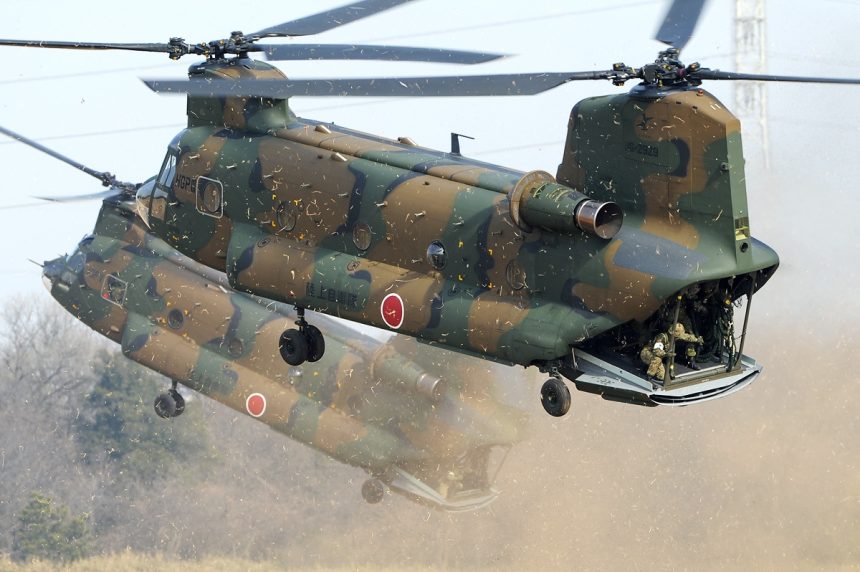The Japan Self-Defense Forces have placed an order for 17 CH-47JA Block II Chinooks (Extended Range) transport helicopters, becoming the fourth nation to acquire the new Block II variant.
On Feb. 13, 2025, Boeing announced that the JSDF (Japan Self-Defense Forces) ordered 17 units of CH-47 Block II Chinooks (Extended Range) to modernize their fleet, replacing and complementing some of the earlier CH-47JA helicopters currently in service with the JASDF (Japan Air Self Defense Force) and the JGSDF (Japan Ground Self Defense Force).
The global #Chinook Block II fleet is growing. 🇯🇵
Thank you, @ModJapan_jp, for ordering 17 CH-47 Block II Extended Range Chinooks. Co-produced with Kawasaki Heavy Industries, the modernized helicopters will improve Japan’s transport capabilities.
More: https://t.co/6nNMf4Zo0x… pic.twitter.com/UUAl45OGZF
— Boeing Defense (@BoeingDefense) February 13, 2025
The aircraft will be co-produced by Boeing and KHI (Kawasaki Heavy Industries), who have already collaborated on the Japanese Chinook program since the 1980s. Japan joins the United States, United Kingdom and Germany as the fourth global customer for this advanced configuration, continuing its 40+ year use of the venerable, yet extremely competent, CH-47 series of transport helicopters.
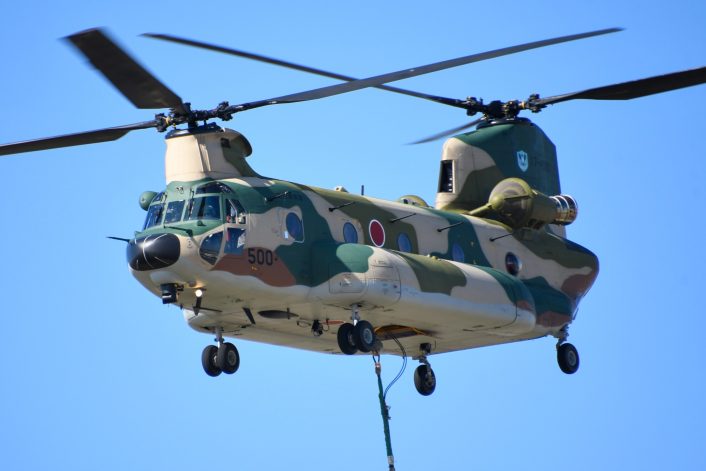
The purchase “strengthens our decades-long relationship with KHI and provides critical capability improvements that will keep the Japan Self-Defense Forces operating heavy-lift aircraft for decades to come,” said Heather McBryan, Vice President and Program Manager, Boeing Cargo Programs.
“The Block II configuration and digital flight controls will modernize and significantly improve Japan’s helicopter transport capabilities by improving aircraft stability, safety, and efficiency,” ensuring that “the JSDF remains at the forefront of heavy-lift aviation for years to come,” added McBryan.
The Block II Chinook
The CH-47F Block II is the latest version of the U.S. Army’s workhorse heavy-lift helicopter. The Block II model, designed by Boeing, introduces significant improvements in payload, fuel economy, and overall performance to meet present-day battle requirements.
According to Boeing, the Block II Chinook extended range aircraft is “the next generation of heavy-lift, and multi-mission helicopter.” The Block II features “an advanced digital cockpit, reinforced airframe, enhanced fuel tanks, and other improvements allowing increased performance and commonality with the expanding global fleet of updated Chinooks.”
One of the most notable improvements is the ACRB (Advanced Chinook Rotor Blade), which utilizes blades with a swept-tip design to provide an increased lift by approximately 10%, and consequently increased lift capability to transport heavier loads.
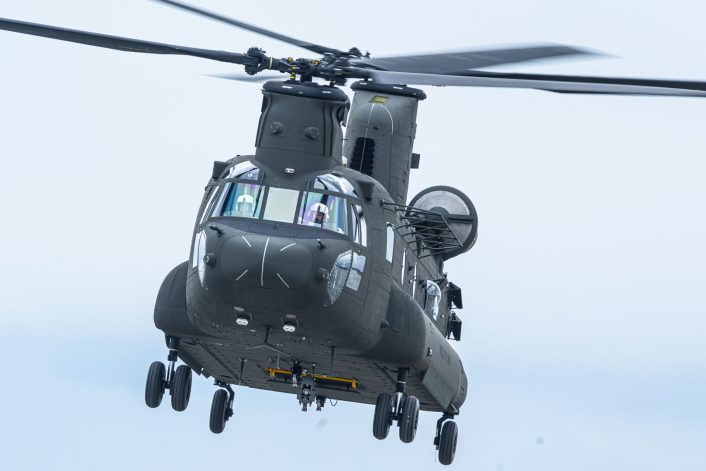
The fuel system has also been redesigned, with the original six fuel tanks reduced to four. This redesign decreases the aircraft’s overall weight while offering more fuel capacity, increased endurance, and easier maintenance, says Boeing. The drive system has been strengthened with a more powerful transmission and drive shafts to accommodate the additional power output offered by the existing Honeywell T55-GA-714A engines for greater efficiency and longevity.
Another significant upgrade is the upgraded electrical system, providing additional power output to support higher-end avionics and future upgrades. These modifications increase the service life of the CH-47F Block II while keeping it compatible with advancing technologies.
Despite these advances, the CH-47F Block II retains the traditional tandem-rotor configuration of the Chinook lineage, which allows for greater stability and control compared to traditional rotor configurations during heavy-lift missions. The aircraft can be employed for a wide range of missions, including troop transport, artillery transport, and disaster relief.
Through these upgrades, the CH-47F Block II maintains various nations’ Chinook forces as a crucial element well into the future.
The Chinook in JSDF Service
The CH-47 Chinook has been a critical part of the JSDF’s helicopter fleet since the 1980s and currently serves in both the JGSDF and the JASDF. Japan operates the CH-47J and CH-47JA variants to fulfill its operational requirements, both of which are license built by KHI (Kawasaki Heavy Industries). The CH-47s replaced the JSDF’s KV-107 (CH-46) transport helicopters.
The Chinook’s advantages shine during logistics support missions, disaster relief and humanitarian operations across Japan, particularly as the island nation is prone to earthquakes, tsunamis, and typhoons.
Kawasaki began manufacturing the CH-47J, which is derived from the CH-47D, in 1984. Since 1993, they have been collaborating with Boeing in the manufacture of the CH-47JA model, which is a significantly improved variant over the CH-47J with a larger fuel tank and other features such as a radar in the nose.
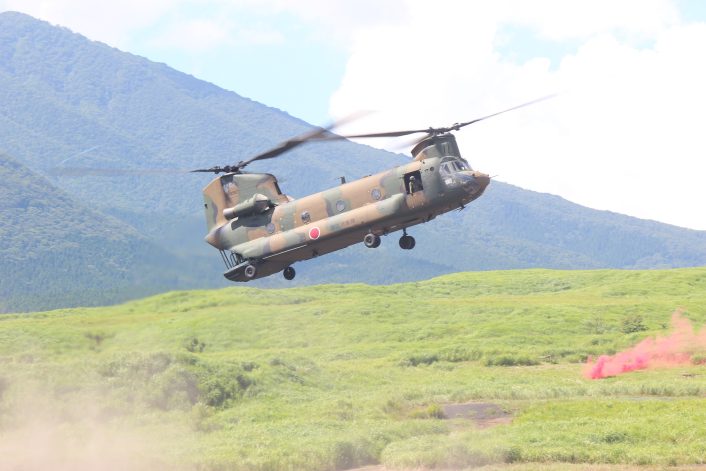
Kawasaki has “delivered more than 110 units to the Japan Ground Self-Defense Force and Japan Air Self-Defense Force.” The CH-47J is powered by two Honeywell T55 engines and has a significant lift capability, with the ability to transport troops, vehicles, and cargo.
The newer variant, the CH-47JA, was developed during the 1990s with greater range, bigger fuel capacity, and improved avionics compared to the CH-47J. The CH-47JA’s longer range allows the JSDF to support Japan’s defense strategy on its numerous islands, such as the previously unreachable Nansei (Ryukyu) Islands near Okinawa. These islands, most of which are unreachable by fixed-wing aircraft, require helicopters like the CH-47 to be reached.
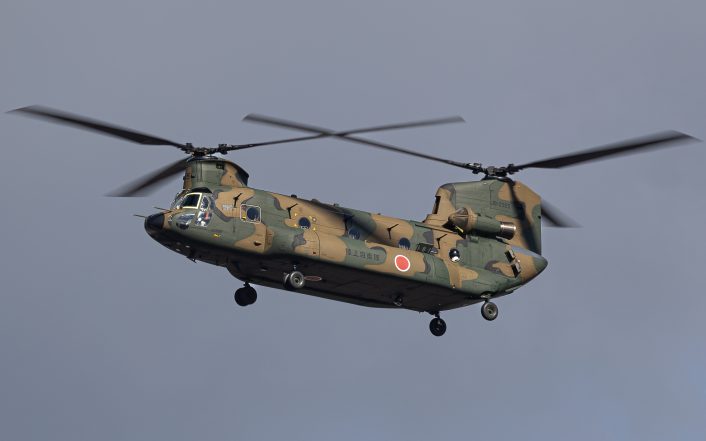
As mentioned earlier, the Chinook’s capability in JSDF service has been most obviously demonstrated in disaster relief operations, such as in the aftermath of the 2011 Great East Japan Earthquake, when CH-47s played a leading role in transporting supplies and evacuating survivors. They are also a critical part of Japan’s overseas peacekeeping efforts, such as in Iraq and UN operations.

